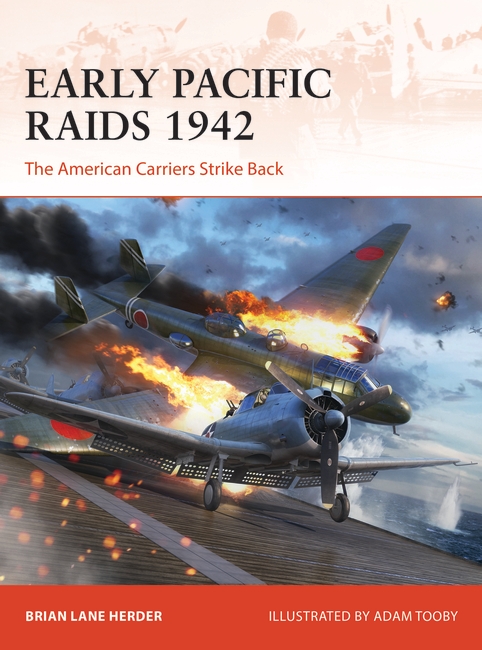
One of the fascinating and overlooked aspects of the early 1942 US carrier raids is that they took place almost entirely in the so-called Mandates. These territories were the direct result of World War I. By 1914, Imperial Germany had established a rather large if undeveloped and economically insignificant Pacific island empire. A quick glance at a globe reveals that these German possessions would be virtually impossible for Imperial Germany to defend in the event of a great power war. Indeed, much of this was entirely the fault of almost self-destructive German military policy.
By the turn-of-the-century, aggressive and unnecessary German naval expansion in the North Sea had forced Britain’s Royal Navy to pull much of its standing power back home to counter the growing German threat. Unlike Germany, Britain had major colonies to defend in the Pacific. The British therefore concluded the 1902 Anglo-Japanese Alliance, a mutual defensive pact with Japan, a rising power in the Pacific. When Germany and Britain went to war in Europe in 1914, the Japanese government had the casus belli it had always wanted. Japanese military power was locally far superior to that of Germany, and within a few weeks of war breaking out, virtually all of Germany’s minor Pacific islands had fallen into Japanese hands. Among these were most of the Mariana Islands (except for Guam, already a US possession), the Caroline Islands, and the Marshall Islands.
The 1919 Treaty of Versailles established the League of Nations, a sort of proto-United Nations intended to prevent further wars and, in a sense, govern the world’s problem spots. To help accomplish the latter, the League of Nations established its so-called ‘Mandates’ in which the most powerful and advanced countries would be ‘mandated’ stewardship of poorly developed areas until they could be given their own independence.
Intentional or not, the League of Nations Mandate territories were essentially a form of ‘victors’ justice’ that imparted a legal method for the winners of World War I to swoop in and take control of the losers’ (primarily Germany’s) foreign colonies. This is not to say there were no good intentions among any of the victorious nations’ policy-makers, but the fact that no territory was granted true independence in the interwar decades is certainly suspicious.
Additionally, by 1922, the five major naval powers had agreed to a complex new naval treaty. Among the many points of contention between the United States and Japan was the fortification of western Pacific islands. The two nations agreed that western Pacific islands would not be fortified at all. This left the United States at a severe disadvantage in the western Pacific, as the Philippines and Guam were rendered virtually defenceless, but it was the price the US government was willing to pay to ensure its desired 10:6 ratio in capital ships.
In theory, all Mandate territories were supposed to be open to international inspection, but the Japanese proved rather defensive about letting foreigners into their territories, which they called the ‘South Seas Mandates.’ By the 1930s, the Japanese government had grown increasingly militaristic, and in 1935 Japan histrionically stormed out of the League of Nations. In theory, this forfeited Japanese rights to administer the islands, but Japan kept the islands anyway.
There was good reason to do so. During the 1920s and 1930s the Japanese government had heavily developed the South Seas Mandates, funneling tens of thousands of Japanese settlers into the islands. The islands themselves became rich sources of copra, sugar and fishing for Japan. Eventually, the colonies became economically self-sufficient and even a source of national income. More importantly to the Americans, the Japanese refusal to let foreigners onto the islands at all fueled American paranoia that the Japanese were illegally fortifying the islands. Ironically, this was not the case until 1940, when the Imperial Japanese Navy began building massive air and naval bases throughout the South Seas. It was this system of almost brand-new bases that was waiting for the Americans in early 1942, when the US carriers finally struck back after Pearl Harbor.
What happened to the islands after 1945? The Americans occupied them under a new United Nations mandate of course – for 40 years. A few of the smaller islands were even nuked almost out of existence (after the natives had been moved, at least). Indeed, what happened to the Carolines, Marshalls and Marianas under American control is almost as fascinating as what transpired under Japanese settlement. But that, of course, is a story for another time.
If you enjoyed today's blog post you can find out more in Early Pacific Raids 1942: The American Carriers Strike Back


Comments
You must be logged in to comment on this post. Click here to log in.
Submit your comment